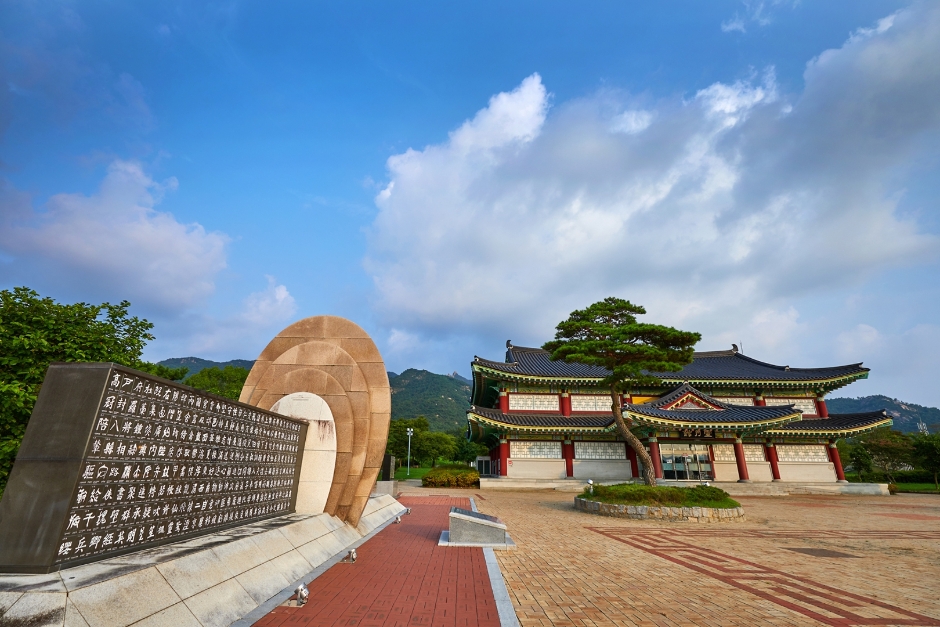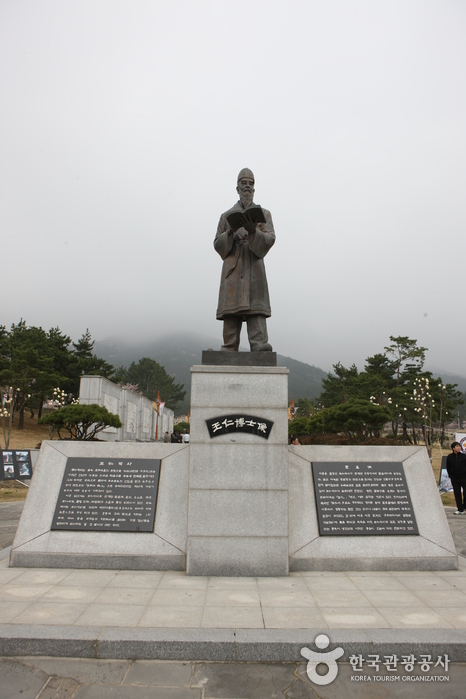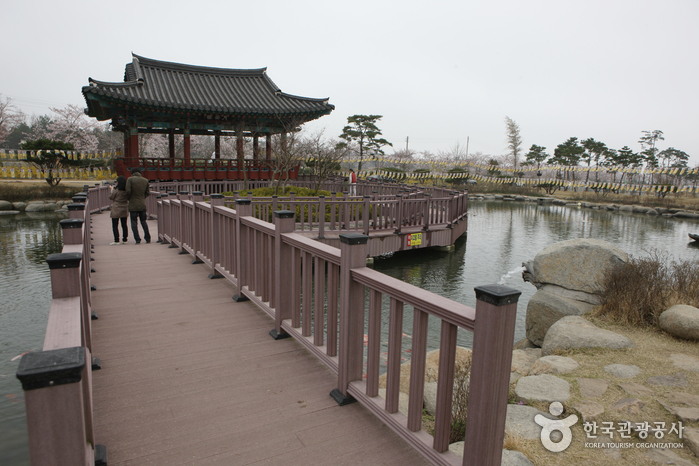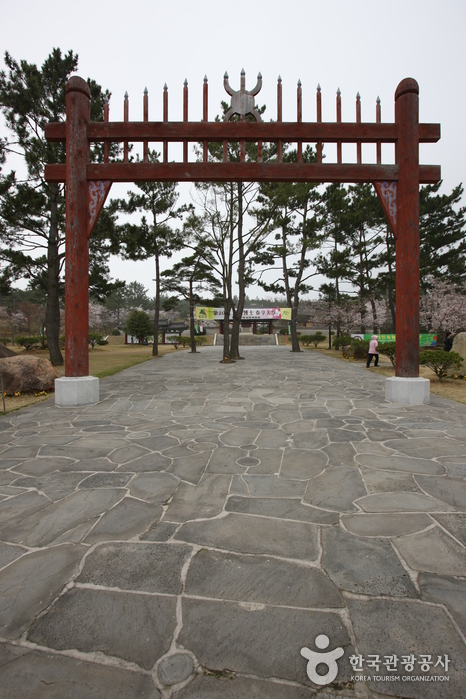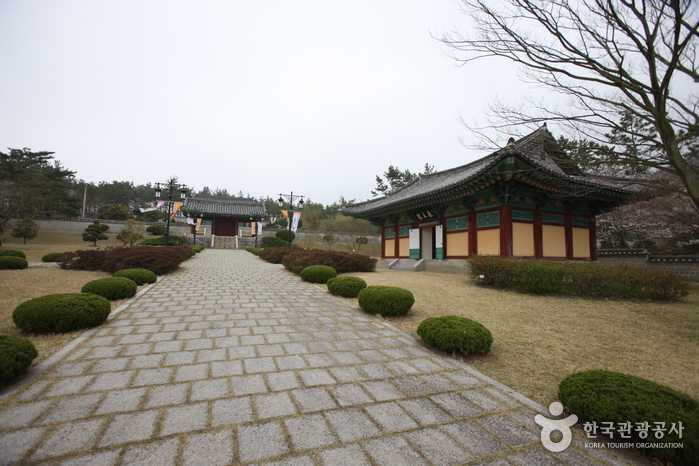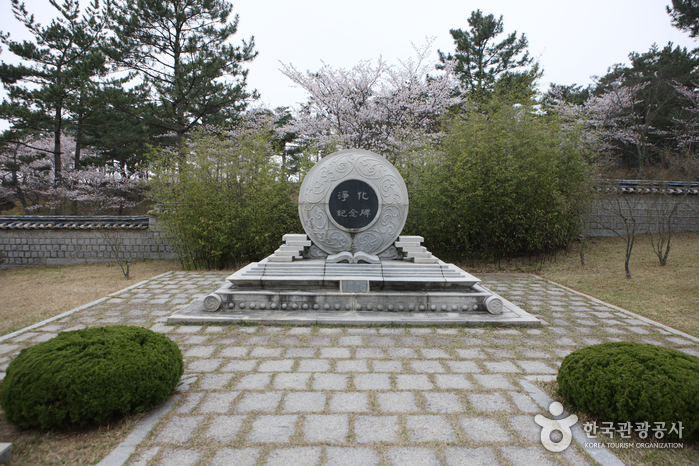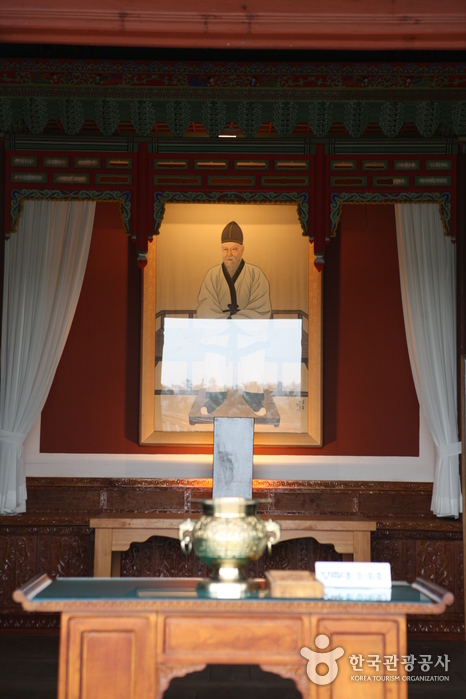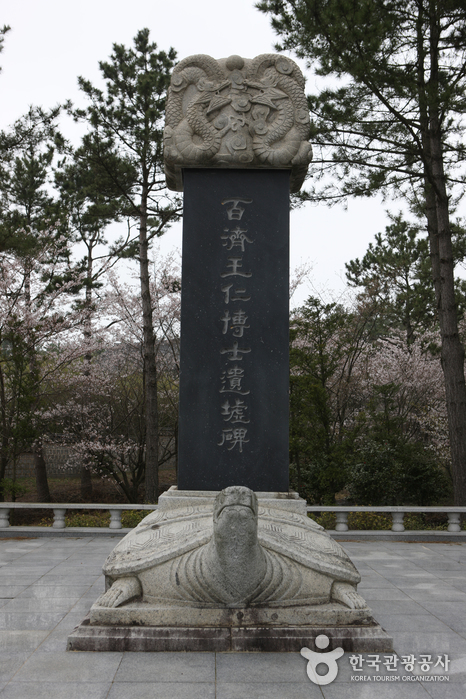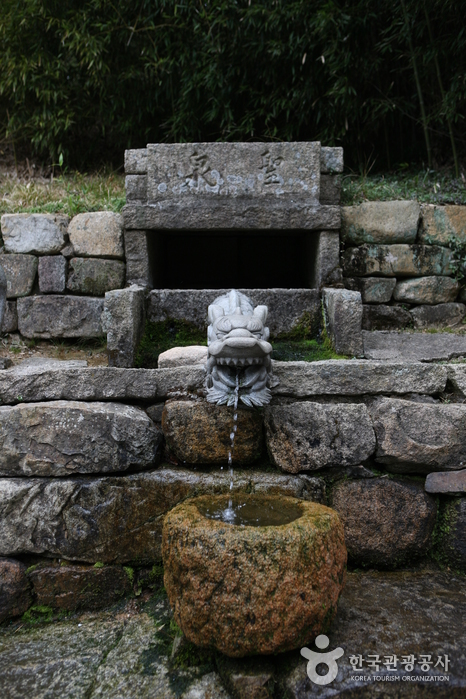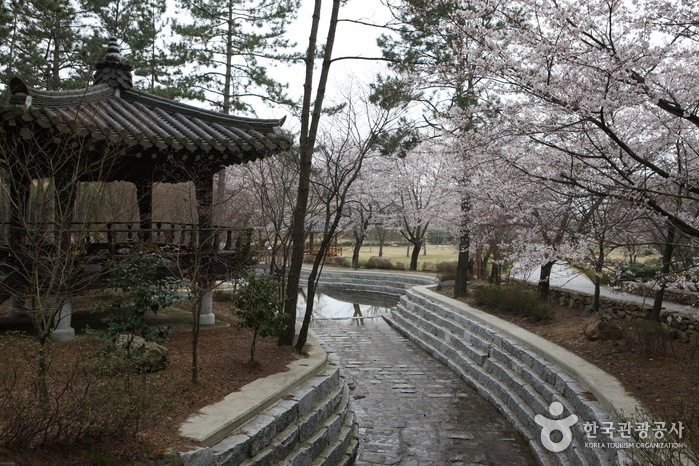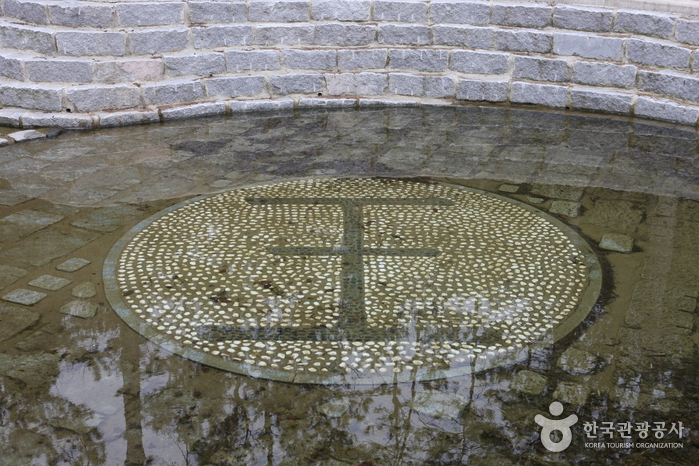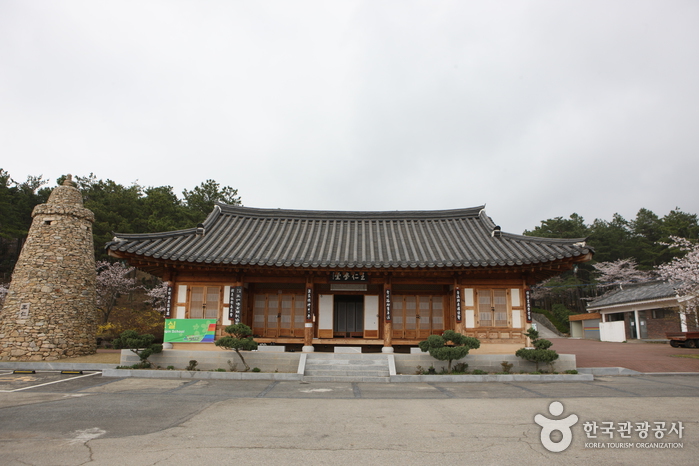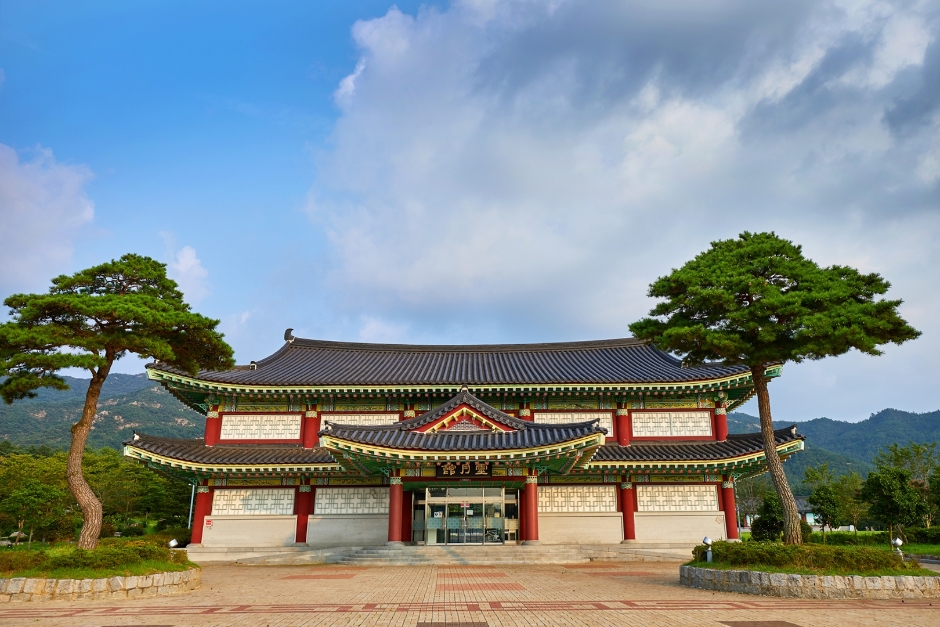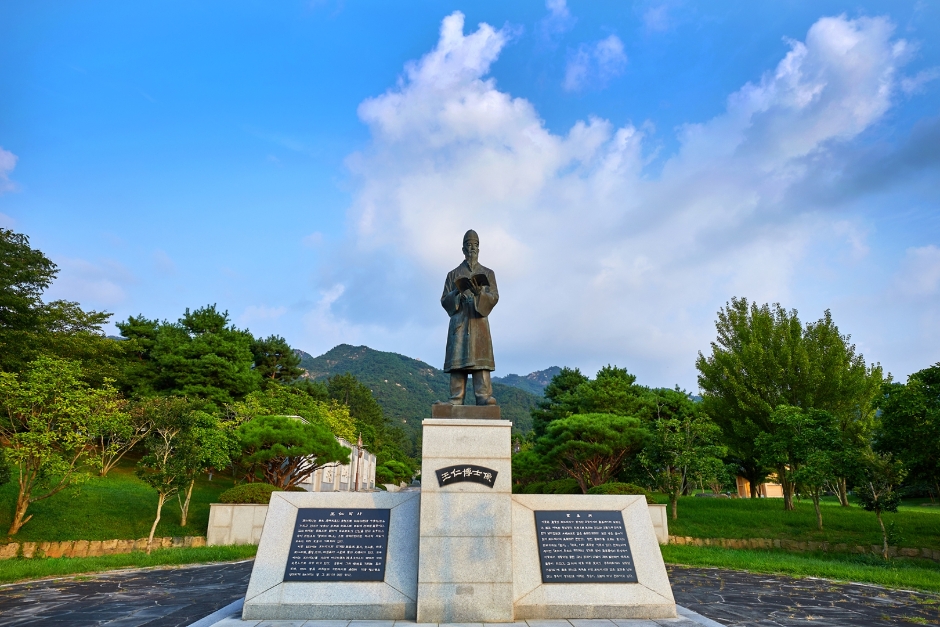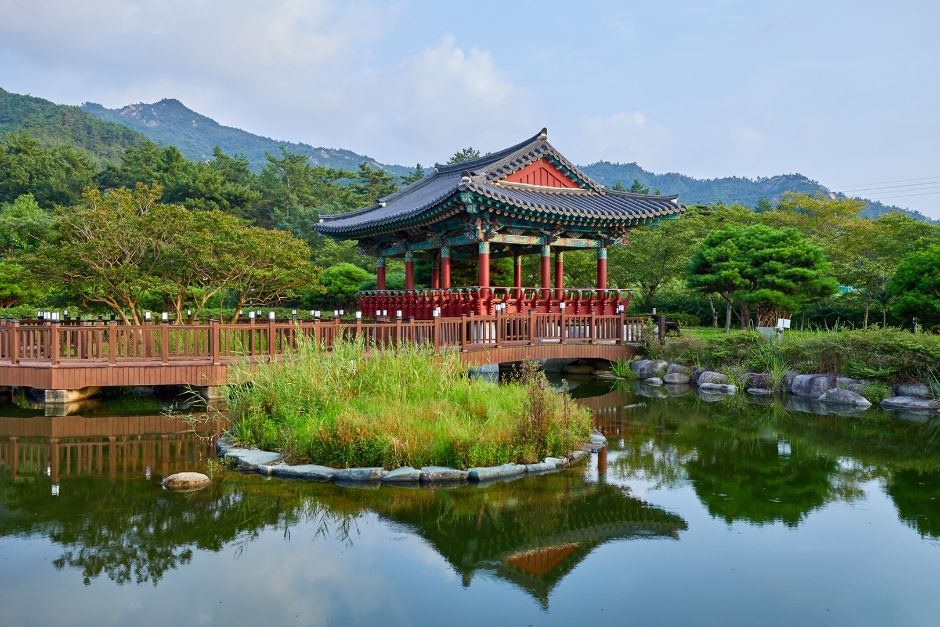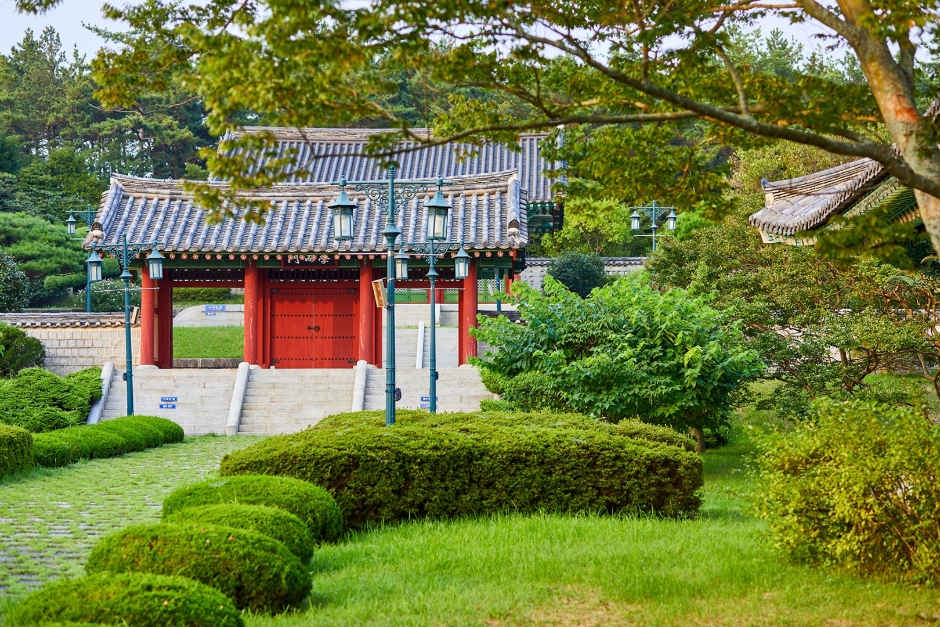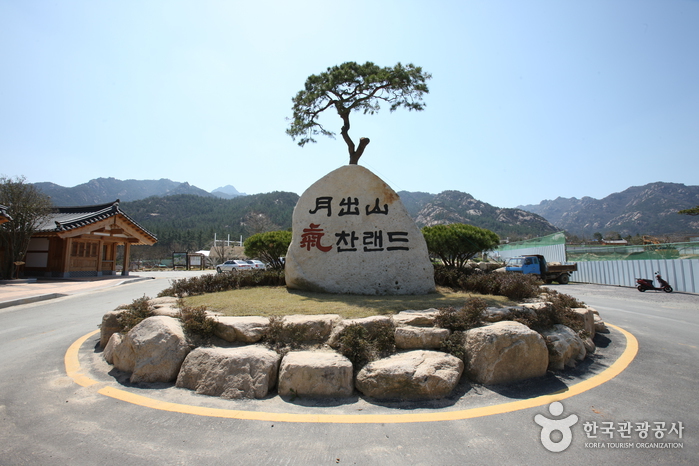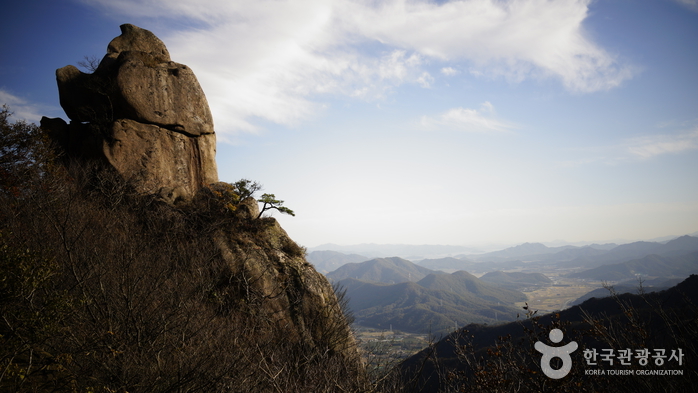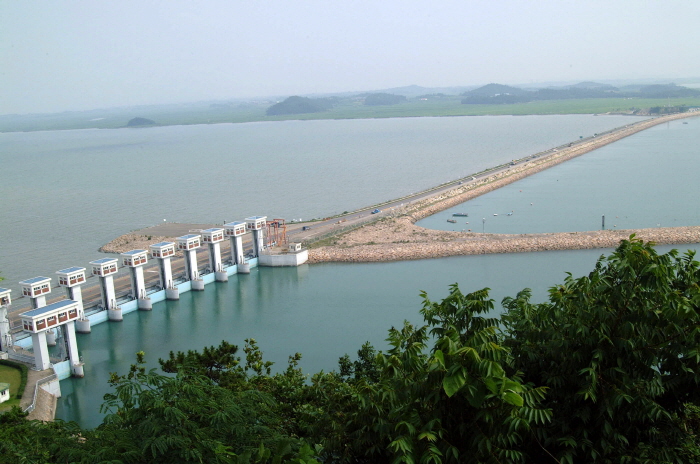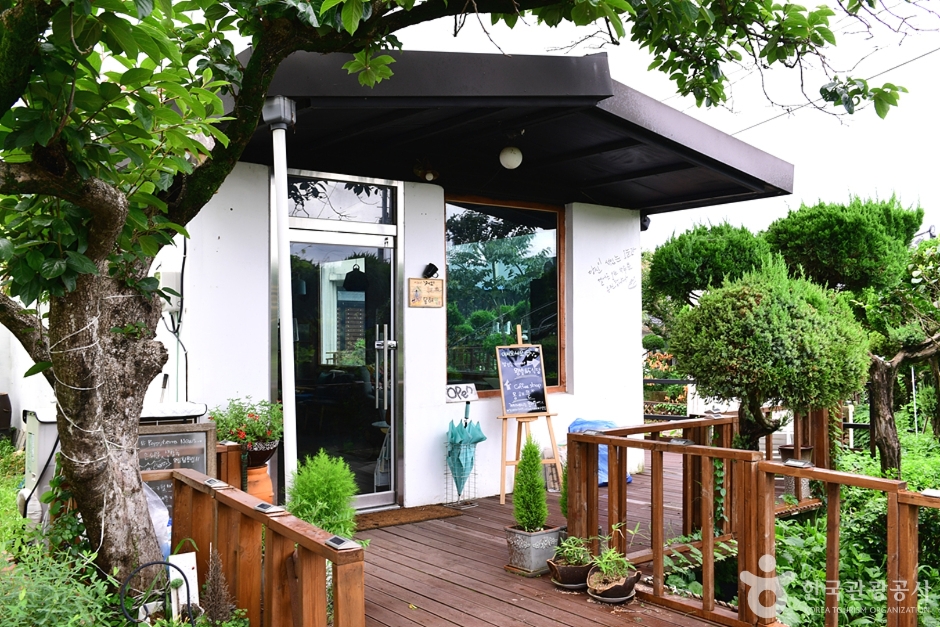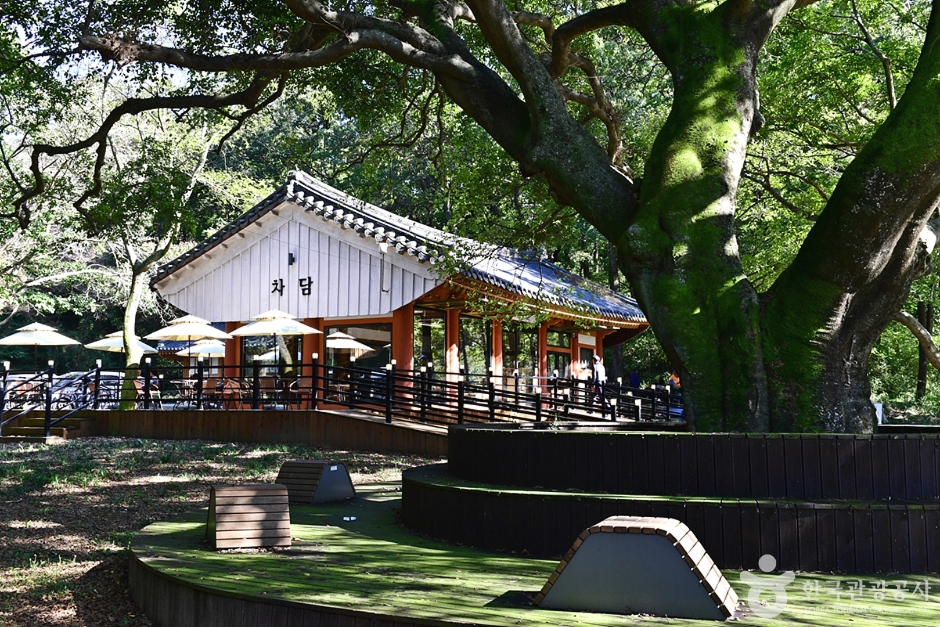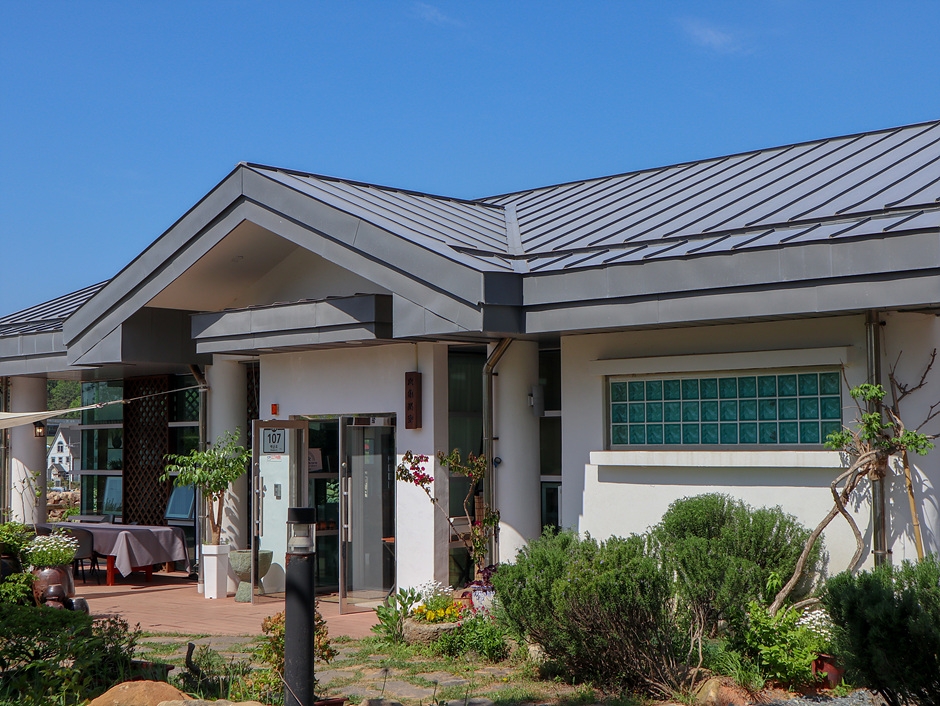Historical Site of Wangin
Introduction
Seonggidong is the official birthplace of Wangin (marked by the Yuheobi memorial monument) and is also home to Seongcheon, the well Wangin is believed to have drunk from. Halfway up Wolchulsan Mountain are Chaekgul, Munsanjae and Yangsajae where Wangin is said to have studied as well as nurtured local pupils. To commemorate the significance of these areas, a memorial is held every March at Munsanjae and Yansanjae.
In front of Chaekgul is a statue of Wangin which is said to symbolize his benevolent character. Just west of Seonggidong is Doljeonggogae, a hill from which it is believed Wangin made a sorrowful look back at his countrymen before leaving for Japan.
Wangin departed for Japan from Sangdaepo, which at the time was an international trading port. The renowned Baekje scholar was beginning his journey at the request of Japanese Emperor Eungshin. He took with him ten books on the Analects of Confucius and a book of Cheonjamun, a text of one thousand Chinese characters. Over time, he earned the trust of the emperor and became instructor to the crown prince. Wangin is well-known for his part in the development of Japanese culture and his name appears often in Japanese history. Wangin educated beyond textbooks and made great contributions to the development of arts, crafts and music and is revered as the originator of Japan’s Asuka culture.
This historic site was originally reconstructed from 1985 to 1987 and is continually receiving improvements to improve accessibility for visitors.
🗺 Location
✏ Details
Parking Fees
Large vehicles 2,500 won / Mid-sized vehicles (more than 9 passengers) 2,000 won / Small vehicles 1,500 won
Admission Fees
Adults (ages 19-64) 1,000 won / Teenagers (ages 13-18) 800 won / Children (ages 7-12) 500 won
* Free admission: Preschoolers (ages 6 or younger) & Senior citizens (ages 65 & older)
Available Facilities
* Yeongwolgwan – Information on Waningin’s achievements and contributions to the Baekje dynasty on display. Second floor houses video room and exhibition hall.
* Statue of Wangin
* Reliefs depicting life of Wangin – A total of six artworks chronicling the life of the great scholar.
* Bongseondae –A variety of events and festivals held at the historic site of Wangin.
* Sinseon Taegeuk Garden & the Tombstone of Wangin – Replica of Wangin’s burial site in Hirakata, Japan. (In celebration of the 10th anniversary of the Wangin Culture Festival, Sinseon Taegeuk Garden was decorated with blue and yellow dragons. The two dragons symbolize co-existence of Korea and Japan.)
* Wolak-ru Pavilion and Rampart
* Wangin Suiseki Exhibition Hall – More than 700 suiseki contributed by Park Chan-dae of Yeongam are on display.
* Mangujeong Pavilion – Rest area.
* Aehyang Suseok Hall - Visitors can relax and take a break here within the historic site.
* The Statue of Choe Ji-mong, a meritorious retainer of the Goryo Dynasty, Hongsalmun Gate, Jemyeongdang, Baekjemun Gate
* Other Facilities - Store, Viewing Deck, Wangin Park
Restrooms
Available
